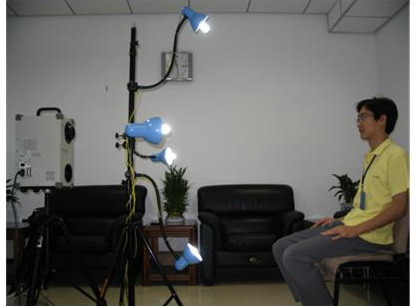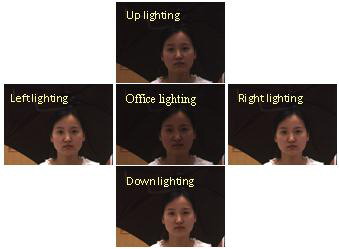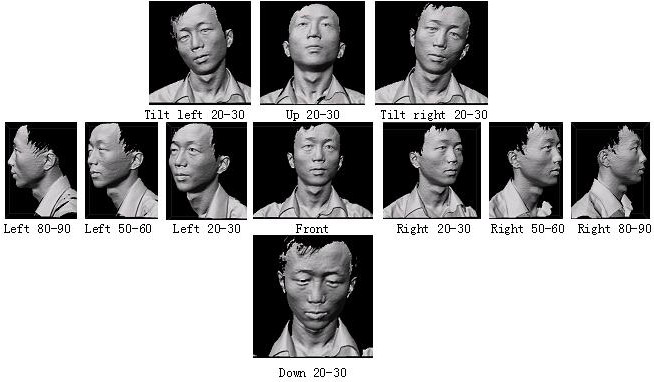Note on CASIA 3D Face Database
1. Introduction
Of all the biometrics features, face recognition remains one of the most active research topics in pattern recognition. In the past several decades, most work focuses on the source of 2D intensity or color images. Since the accuracy of 2D face recognition is influenced by variations of poses, expressions, illuminations and subordinates, it is still difficult to develop a robust automatic 2D face recognition system. The 3D facial data can provide a promising way to understand the characteristics of the human face in 3D domain, and has potential possibility to improve the performance of the recognition system. And more and more researchers focus on 3D face recognition in the past few years. However, since the 3D cameras are not as common as 2D cameras, it is expensive to build a public 3D face database, which brings the difficulty to validate the proposed methods in a uniform platform. Therefore, we are pleased to release a complete 3D face database, which is aimed to be a public platform in testing the algorithms in 3D face recognition or others.
2. Brief Descriptions of the Database
Between August 2004 and September 2004, we collected a 3D face database consisting of 4624 scans of 123 persons using the non-contact 3D digitizer, Minolta Vivid 910, as shown in Fig.1. During building the database, we consider not only the single variations of poses, expressions and illuminations, but also the combined variations of expressions under illumination and poses under expressions, as shown in Fig.2, Fig.3 and Fig.4. To the subjects with glasses, we will collect one additional scans with glasses. Thus, each person contains 37 or 38 scans. And from each scan, one 2D color image and one 3D facial triangulated surface are also generated. We aims to build a complete 3D face database, which is further driven to be a public platform in testing the algorithms in 3D face recognition or others.

Figure 1 Capturing scenes of CASIA 3D Face Database

Figure 2 Illumination variations of the CASIA 3D Face Database

Figure 3 Expression variations of the CASIA 3D Face Database

Figure 4 Pose variations of the CASIA 3D Face Database
3. Download Instructions
Researchers requesting this database should follow the steps as below:
lVisit the website: http://biometrics.idealtest.org.
lRegister an account and login.
lDownload the CASIA 3D Face Database from our website with the authorized account:
Download the CASIA 3D Face Database here.
4. Copyright Note and Contacts
The database is released for research and educational purposes. We hold no liability for any undesirable consequences of using the database. All rights of the CASIA database are reserved. Any person or organization is not permitted to distribute, publish, copy, or disseminate this database. In all documents and papers that report experimental results based on this database, our efforts in constructing the database should be acknowledged as: ¡°Portions of the research in this paper use the CASIA-3D FaceV1 collected by the Chinese Academy of Sciences' Institute of Automation (CASIA)¡± and a reference to ¡°CASIA-3D FaceV1, http://biometrics.idealtest.org/¡± should be included.
Publications
[1] Cheng Zhong, Zhenan Sun, Tieniu Tan, Learning Efficient Codes for 3D Face Recognition, International Conference on Image Processing (ICIP) 2008.
[2] Cheng Zhong, Zhenan Sun, Tieniu Tan, Robust 3D Face Recognition Using Learned Visual Codebook, IEEE Computer Society Conference on Computer Vision and Pattern Recognition (CVPR) 2007.
[3] Cheng Zhong, Tieniu Tan, Chenghua Xu, Jiangwei Li, Automatic 3D Face Recognition Using Discriminant Common Vectors,International Conference on Biometrics (ICB) 2006.
[4] ChengHua Xu, Tieniu Tan, Stan Li, Yunhong Wang and Cheng Zhong, Learning Effective Intrinsic Features to Boost 3D-Based Face Recognition, European Conference on Computer Vision (ECCV) 2006.
[5] ChengHua Xu, Tieniu Tan, Yunhong Wang and Long Quan, Combining local features for robust nose location in 3D facial data, Pattern Recognition Letters (PRL), Vol. 27, Issue 13, pp. 1487-1494, 2006.
[6] Chenghua Xu, Yunhong Wang, Tieniu Tan and Long Quan, 3D Face Recognition Based on G-H Shape Variation, Springer, LNCS 3338, pp.233-243, 2004.
[7] Chenghua Xu, Yunhong Wang, Tieniu Tan and Long Quan, A Robust Method for Detecting Nose on 3D Point Cloud. Proc. IEEE International Conference on Image Processing (ICIP), pp.1995-1998, 2004.
[8] Chenghua Xu, Yunhong Wang, Tieniu Tan and Long Quan, Depth vs. Intensity: Which is More Important for Face Recognition, Proc. IAPR International Conference on Pattern Recognition (ICPR), pp.342-345, 2004.
[9] Chenghua Xu, Yunhong Wang, Tieniu Tan and Long Quan, Automatic 3D Face Recognition Combining Global Geometric Features with Local Shape Variation Information, Proc. The 6th IEEE International Conference on Automatic Face and Gesture Recognition (FG), pp.308-313, 2004.
|

